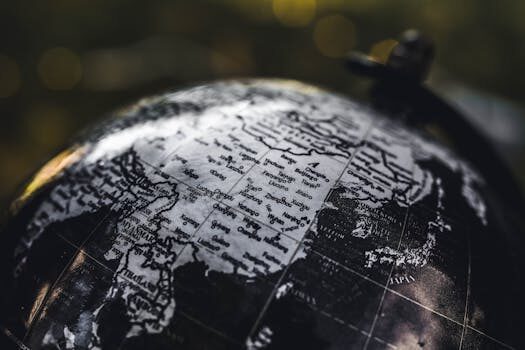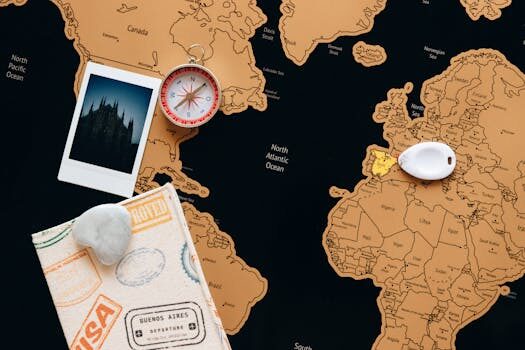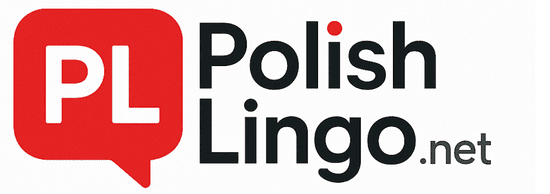Countries & languages in Polish

Learning about countries and languages in Polish can be a fascinating journey for anyone interested in language studies or traveling to Poland. With its unique sounds and grammar, Polish offers a window into the rich cultural tapestry of Eastern Europe.
Understanding how to say the names of countries in Polish not only broadens one's linguistic repertoire but also enhances cultural appreciation. So let's delve into the world of Polish vocabulary for countries and the intricacies of the language's structure.
What are the names of countries in Polish?
Poland, known as "Polska" in Polish, is just the starting point when it comes to the expansive list of countries in Polish. This Slavic language has its own unique names for countries across the globe, which may sound quite distinct from their English counterparts. For instance, the United States is referred to as "Stany Zjednoczone," and Germany is known as "Niemcy."
The Polish language names for countries often carry historical or cultural significance, making them intriguing for language enthusiasts. Learning these names is not only practical for travel but also offers insight into Poland’s perspective of the world.
Here's a brief list to get started:
- England - Anglia
- Spain - Hiszpania
- Italy - Włochy
- France - Francja
- Japan - Japonia
How are nationalities formed in the Polish language?
When it comes to expressing nationalities in Polish, the language follows a grammatical system that categorizes words by gender. This means that the nationality will change its ending depending on whether it's describing a male or a female subject. For example, a Polish man is a "Polak," while a Polish woman is a "Polka."
The formation of nationalities in Polish is quite systematic, with most countries adopting a similar pattern. A few examples include:
- American - Amerykanin (male), Amerykanka (female)
- Spanish - Hiszpan (male), Hiszpanka (female)
- German - Niemiec (male), Niemka (female)
It's important to remember these variations to communicate accurately and respectfully in Polish.
Why is it important to learn countries and languages in Polish?
Delving into the Polish vocabulary for countries is more than a linguistic exercise; it's a gateway to understanding the cultural nuances of the country. Knowing these terms can aid in forming deeper connections with Polish speakers and appreciating the country's rich history.

Moreover, learning about countries and languages in Polish could be beneficial for business professionals, travelers, and students studying abroad. It facilitates smoother communication and shows respect for Poland's culture and language.
And for those with Polish heritage, it's a way to connect with one's roots and possibly communicate with relatives who speak the language.
What is the pronunciation guide for countries in Polish?
The pronunciation of countries in Polish can be challenging for English speakers due to a variety of unique sounds. However, with practice, one can master the correct pronunciation. Here are a few tips:
- The letter "c" is pronounced like "ts" in "bits."
- The "sz" combination sounds like "sh" in "ship."
- The "j" is similar to the English "y" in "yes."
Here's a quick guide for a few country names:
- Canada - Kanada (kah-NAH-dah)
- Mexico - Meksyk (MEK-sik)
- Brazil - Brazylia (brah-ZY-lyah)
How do countries in Polish compare to their English names?
While some countries in Polish have names similar to their English counterparts, others differ significantly. For instance, Hungary is known as "Węgry" in Polish, which bears no resemblance to the English name. Such differences underscore the importance of learning specific Polish names to avoid confusion during conversations.
Understanding these name variations can be particularly useful for translators, linguists, and multinational company employees who frequently interact with both language sets.
Which European countries are included in the Polish vocabulary?
In Polish, the names of European countries are plentiful and diverse. Here’s a list featuring several of them:

- Norway - Norwegia
- Sweden - Szwecja
- Portugal - Portugalia
- Greece - Grecja
- Russia - Rosja
/
These names reflect the Polish culture and its geographical proximity to other European nations, which is often mirrored in the closeness of the language.
Questions related to countries and languages in Polish
What countries main language is Polish?
Poland is the primary country where Polish is the main language. It is an official language and is spoken by the vast majority of the country's population.
In addition to Poland, there are communities in neighboring countries and diasporas around the world that also speak Polish, contributing to its status as a significant European language.
What is the closest language to Polish?
Czech and Slovak, both West Slavic languages like Polish, are considered some of the closest languages to Polish. They share a significant amount of vocabulary and similar grammatical structures, making them somewhat mutually intelligible.
Is Polish a Slavic or Germanic language?
Polish is part of the West Slavic languages group, which makes it a Slavic language, not Germanic. It shares similarities with other Slavic languages but has its own distinct characteristics and complexities.
How do you say hello in Poland language?
To say hello in Polish, you would say "Cześć" (pronounced cheshch) for informal greetings, or "Dzień dobry" (jen DOH-bri) for a more formal daytime greeting.
What language do they speak in Poland?
The official language of Poland is Polish. It is the most widely spoken West Slavic language and is known for its complex gender system and variety of consonant sounds.

Why is Polish so different from other Slavic languages?
Polish has a number of unique features that set it apart from other Slavic languages, including its pronunciation, complex gender system, and use of the Latin script with additional diacritics. Its development was also influenced by historical contacts with non-Slavic languages, particularly German.
As part of our visual exploration, let's watch a video that delves into the Polish language and its nuances:
In conclusion, whether you’re a language enthusiast or planning to visit Poland, understanding the names of countries in Polish with pronunciation is an enriching endeavor. From the intricacies of forming nationalities to the shared cultural heritage reflected in the vocabulary, there’s a wealth of knowledge waiting to be discovered in the Polish language.

Leave a Reply